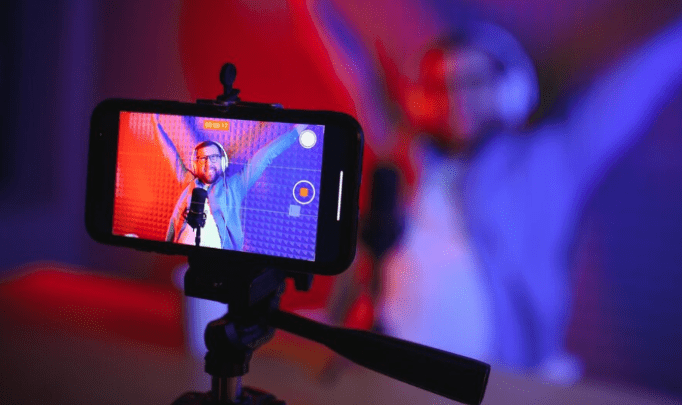When it comes to streaming, the higher the video quality, the more the difference in the world. Whether you’re making videos for fun, knowledge, or business, the quality of the video affects how people see your work. Livestreaming on an expert live streaming platform can add much more value to your streams and keep the audience hooked and amazed.
Let’s talk about the essential elements that are hindering your video quality and how you can make your streams more clear and professional.
Importance of Video Quality
Effects on Viewers and Fans
Video quality for your viewers is one of the most influential factors they consider when both viewing and engaging with your content. When good quality videos are involved, the results are more engrossing and keep viewers glued on that video while prompting them to watch for longer periods. On the contrary, the poor-quality video may undermine the audience’s attention span, and they would perhaps turn to another video.
Perception of Content Quality
High-quality video production shows that you are serious and worthy of the audience’s trust, and this strengthens the overall perception of the value of your content. The audience is likely to value and show more trust with a live stream that is more visually appealing and clear.
Main Factors to Improve Image Quality
-
Resolution and Frame Rate
The resolution and frame rate of videos determine the clearness and smoothness of streams. Video with super high resolutions, such as 1080p or 4K, provide clearer images, and frame rates up to 60 or 30 frames per second guarantee the smoothness of moving pictures.
-
Bitrate and Compression
It is critical to do a bitrate optimization that will allow to retain video quality while reducing file size. Compression types help to keep balance between the quality and the amount of data, however, over-compression leads to poor video quality.
-
Lighting and Sound
The correct lighting is the basis for a successful shoot in terms of high-quality images and an elegant look. Use natural light, soft boxes, and ring lights to improve your on-air presence. Apart from good looks, the quality of the sound should not be disregarded; buy a good microphone for clear audio.
Choosing the Right Streaming Equipment
1.Cameras and Lenses
The right camera and lens selection can make a huge difference when it comes to creating quality videos. Look at the sensor size, resolution and low-light performance as you decide your equipment.
2. Microphones and Audio Interfaces
The audio quality must never be ignored. Purchase a quality microphone and, if it is necessary, an audio interface to make sure you have clear and professional sound quality.
Optimizing Your Streaming Environment
Back ground and Set Design
Have an alluring background that will blend with your content. A tidy and well-arranged set will support your performance and will keep viewers fixated on you.

Internet Speed and Connectivity
The stability of an internet connection is a key factor for uninterrupted streaming. Make sure that your connection is quick and stable and use the cable connection if available to get the best results.
Best Practices for Video Quality
Pre-Streaming Testing and Setup
Prior to going live, do a test of your equipment, audio, and video settings. Such preparation will decrease the possibility of having technical glitches during your broadcast.
Monitoring During Streaming
Keep an eye on the quality of your stream while you are broadcasting. Keep an eye on chat feedback for issues and make changes if required.
Advanced Techniques for Superior Video Quality
Color Grading and Correction
Using color filters and corrections will make your streams look better. Make adjustments to colors, brightness, and contrast by editing software for a perfect result.
Post-Processing for Streamed Content
Post-processing can help tune your streamed material more precisely. Add effects, filters, and other enhancements to make the video intriguing.
Tips for Different Streaming Platforms
YouTube
On YouTube, the quality of videos can be optimized by setting the right resolution, bitrate, and encoding parameters for your content. Use YouTube video editor for post-stream editing.
Twitch
Streaming on Twitch includes present in-the-moment talking and communication. Guarantee that your stream’s quality and regularity go in line with the platform’s requirements.
Facebook Live
Facebook Live exploits stability and the ability to respond to viewers. Emphasize the smooth streaming and reactivity to the comments and swift responses.
Enhancing Mobile Streams
Mobile Streaming Equipment
Invest in a good phone camera and a microphone when streaming on mobile devices. Try to use external stabilizers and tripods if you need smooth and steady footage.
Stabilization Techniques
With the use of gimbals and tripods, the shaking can be minimized, and thus, a professional look can be achieved for mobile streams. Try out various stabilization techniques to enhance the outcome.

Conclusion
Continuously increasing video quality is an ongoing process that involves a close look at details and making adjustments as needed. By zeroing in on the pivotal elements of picture quality, lighting, sound, and equipment, you can upgrade your stream to a higher notch and make the viewing experience more intense for your viewers. Keep ion with testing and monitoring of video quality as well as updated on the new technologies and trends in the video streaming market to maintain your competitive edge.
FAQs
What format is the best for streaming?
1080p is the most widespread and appropriate resolution for streaming. This explains why its cost data usage is not very excessive, which leads to clear visuals.
In what ways can I create my streams to look better with a few adjustments?
Softboxes, ring lights, and natural lights are the sources that you need for uniform and healing stream lighting.
Do we need higher frame rates to show the fast-moving actions that might blur on low frame rates?
Fast or High-speed encoding settings have generally been suggested for quality streaming out of 30 or 60 frames per second (fps)
How shall I compose my mobile streams and prevent them from being dislocated?
Apply outside stabilizers such as gimbals and tripods to reduce that shake and create more stable video capturing.
Should I focus on the type of microphone or on its parameters?
Seek a mic with a crisp voice and background noise detection capacity. Microphone compatibility with other devices, e.g., a computer, is another point that has to be taken into account.



